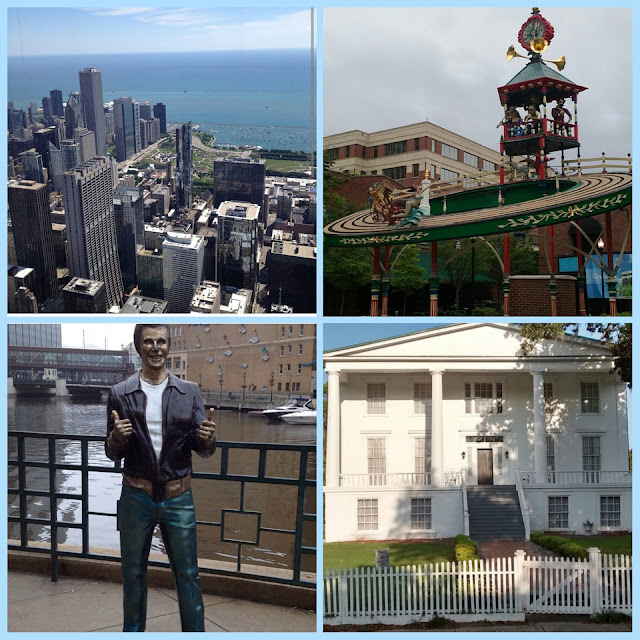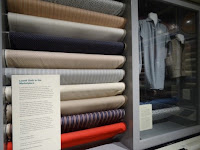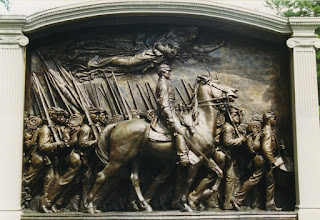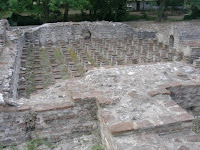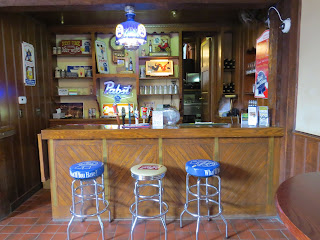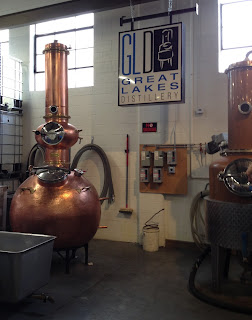By David
Duncan
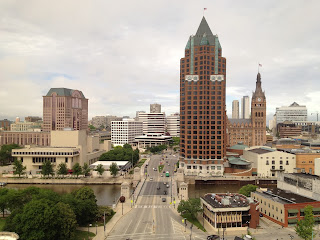 Do
you like Beer and History? How about combining the two in Milwaukee—the city
that beer built! Recently, I was lucky enough to tour various Milwaukee
breweries and get a taste of the city and its history, one pint glass at a
time. So why choose Milwaukee for a series of brewery tours? Well, I am just a
guy who loves beer—drinking it, as well as brewing it, so it was only natural
to plan a vacation around visiting some great breweries in the city known for
Beer!
Do
you like Beer and History? How about combining the two in Milwaukee—the city
that beer built! Recently, I was lucky enough to tour various Milwaukee
breweries and get a taste of the city and its history, one pint glass at a
time. So why choose Milwaukee for a series of brewery tours? Well, I am just a
guy who loves beer—drinking it, as well as brewing it, so it was only natural
to plan a vacation around visiting some great breweries in the city known for
Beer!
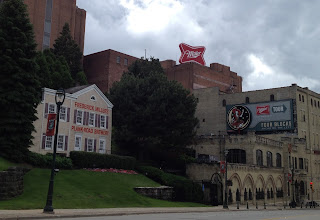
By
far the largest beer producer in the Milwaukee area is MillerCoors. The Brewery is located in the heart of Miller
Valley. This is the one tour that is
free and offers a great mix of information related to beer production and the history
of the brewery. The tour begins with visitors
sitting through a video overview of the Miller Brewery History and then a
walking tour of several of the beer production facilities, as well as the historic
Miller Caves. Throughout the tour visitors learn about the 150
years of brewing history. One of the tour highlights is visiting the underground
caves where Frederick Miller cooled his early brew.
The MillerCoors brewery is the most modern facility in the area and the high-speed
production lines produce some of the most popular beer (Miller Lite) in the U.S. Not only
will you learn about the “Champagne of Beers” but you can taste it at the end
of the tour in the historic, Bavarian-style Miller Inn.
At
one time the Pabst Brewery employed more than 5000 workers at their Milwaukee location. However, those days are long gone and the brewery
was closed in 1996. Nevertheless,
the Pabst Blue Ribbon Beer Hall is still used and operates today as Best
Place. This was a unique brewery tour
considering the brewery no longer operates.
Instead, visitors sit in the Beer Hall for an informative tour through the Pabst
brewing history. The tour does include
your choice of beer, PBR or Schlitz tend to be the favorites.
Also, a tour highlight includes getting your picture made with Captain Pabst
himself in the Captain's Courtyard.
 By
far, the Milwaukee Brewing Company tour was where the beer production info is
overshadowed by the sheer amount of beer that could be consumed. This tour was more of a social event than any
sort of history or beer production guide.
Visitors were allowed to drink at the bar before, during, and after the
tour using the MKE pint glass that is part of the tour. We enjoyed walking around the tour and
talking to the various tour guides. This
tour was really a great one on one type of experience.
By
far, the Milwaukee Brewing Company tour was where the beer production info is
overshadowed by the sheer amount of beer that could be consumed. This tour was more of a social event than any
sort of history or beer production guide.
Visitors were allowed to drink at the bar before, during, and after the
tour using the MKE pint glass that is part of the tour. We enjoyed walking around the tour and
talking to the various tour guides. This
tour was really a great one on one type of experience.
According
to Lakefront’s info—they believe people want to go on brewery tours for three
main reasons: drink beer, be entertained
and see the place. Lakefront certainly
hit all three points. We received a
small tasting glass and four tokens in which to enjoy a cold brew. Lakefront offers a very spacious Beer Hall, which
we considered the best out of the breweries we visited. The tour is very serious and offers a great
informative overview of beer production.
The tour ends with a rousing rendition of the Laverne and Shirley theme
song and reenactment of the Laverne’s glove riding through the bolting line.
We
really were excited to embrace Milwaukee’s German heritage while touring the
Sprecher Brewery. They bill themselves
as a brewing company with a modern twist on an old-world brewing tradition. Like Pabst and Lakefront, Sprecher does offer
a German style beer garden. Although
they began as a beer brewer, Sprecher’s sells far more of their gourmet sodas
like Root Beer than beer. This tour was
also the one in which there were as many kids on the tour as adults. Considering visitors got their choice of four
beers or all you can drink sodas, this was by far the most family friendly
tour. Sprecher does offer a small Beer
Garden, but visitors quickly fill up the garden making for a rather cramped
good time.
They
may not be serving up the beer Milwaukee is known for, but a tour of Great
Lakes Distillery, Wisconsin’s first post-Prohibition distillery is a must for
all fans of local craft liquor. The tour is small and intimate, offering a tasting of the small-batch distillery’s products. During the tasting, the guide was able to help us learn the small details that each batch is known for.
Although Milwaukee might
not be on everyone’s radar as a place to vacation, we find it the perfect mix
for a beer enthusiast and historian. I
thoroughly enjoyed my time in Milwaukee and certainly sampled plenty of the
beers Milwaukee has to offer. Sadly, my
wife does not drink beer. However, that
didn’t matter since every brewery offered Root Beer as an alternative. So, if you enjoy beer and history, I would
certainly recommend putting Milwaukee on your vacation to-do list.



